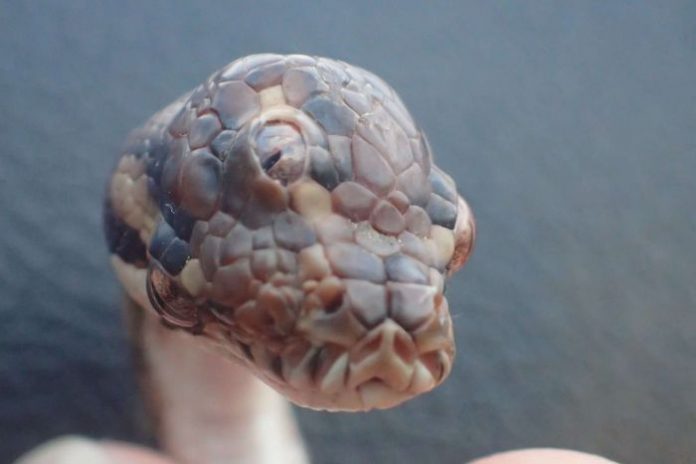Rangers working near Darwin in northern Australia have found an unusual snake at the side of a road. The malformed reptile had three eyes instead of two.
X-rays revealed the juvenile snake, which measured about 15 inches, had an extra eye socket on its head. According to a post from the official Northern Territories Parks and Wildlife Facebook account, the snake’s third eye was functional.
Rangers said the snake, a carpet python, probably grew its extra eye as an embryo. It’s “extremely unlikely” to be the result of environmental factors, they wrote, as naturally-occurring malformations are quite common in reptiles.
Referencing hit HBO show Game of Thrones the Parks and Wildlife post added: “The three-eyed snake warns The Dry is coming!”
Game of Thrones features a mystical three-eyed raven, personified by a character called Bran Stark, whose house motto is “Winter Is Coming.” Unlike southern Australia, which freezes over Winter, Australia’s Northern Territories experience a dry season from May to October, as the local government’s website notes.
A spokesperson from Parks and Wildlife later told Newsweek that the snake had struggled to eat properly and died.
In October 2018, an unsuspecting couple living in Leslie County, Kentucky, found a two-headed baby copperhead snake in their yard. Conservation officials confirmed both heads and sets of eyes could move, and that the creature’s two tongues were functional. Authorities were so impressed by the rare animal they decided to temporarily put it on display at the Salato Wildlife Education Center.
“I have never seen a two-headed copperhead before,” herpetologist John MacGregor said in a video about the snake. “I’ve seen thousands of copperheads.”
Just one month earlier, a woman in Woodbridge, Virginia, also came across a two-headed baby copperhead outside her home. Herpetologists with the Wildlife Center of Virginia took in the creature, and discovered its left head was generally more active than the right.
The creature had two windpipes and two oesophagi—all at different levels of development—but only one heart and one set of lungs. “Based on the anatomy, it would be better for the right head to eat, but it may be a challenge since the left head appears more dominant,” the Wildlife Center explained at the time.
Two-headed snakes are relatively vulnerable in the wild, and are more likely to experience serious health problems than their one-headed relatives.













